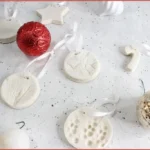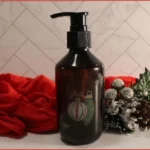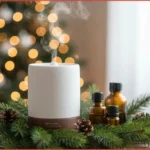Stepping out into fresh air and sunshine always feels great, whether you’re tending a garden, having a backyard picnic, or heading out for a camping trip.
But sometimes, too much sun, uninvested critters, smelly gear, and fatigue can get in the way of your fun. That’s where the right essential oils make a difference – they can help keep bugs at bay, freshen up your space, and create a relaxing mood.
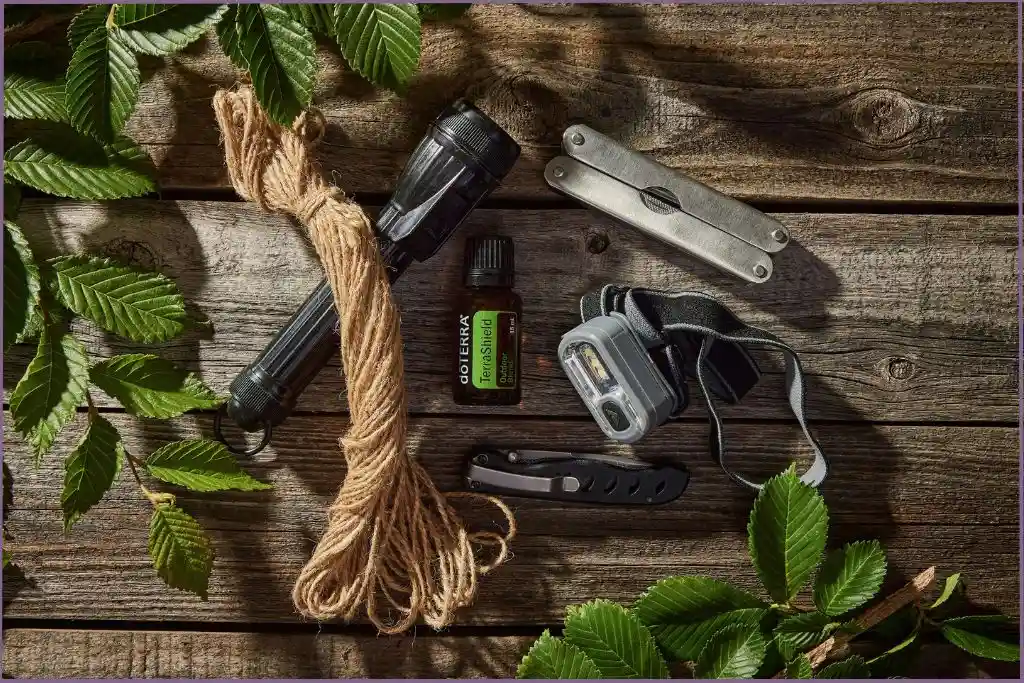
✨ Get 12 Free Holiday Diffuser Blends — Printable PDF
Instantly make your home smell like Christmas with these festive, ready-to-use recipes.
This simple guide on how to use essential oils outdoors safely and effectively includes lots of easy tips that allow you to enjoy every moment in nature a little more comfortably.
Affiliate Disclosure: Some links on this site are affiliate links. I may earn a small commission if you purchase through them, at no extra cost to you. See the full affiliate disclosure.
Choosing the Best Essential Oils for the Outdoors
When it comes to using essential oils outdoors, there’s no single scent that’s right for everything. Every oil has a different aroma and offers different benefits.
The key is to pick scents that match your goals outdoors. Do you want to deter insects, cool your skin, or lift your mood?
I’ve grouped the best essential oils for outdoor use into three categories – bug deterrent, after-sun skincare, and odor control. You’ll also find an easy way to use each oil for that purpose.
Best Essential Oils That Deter Pests
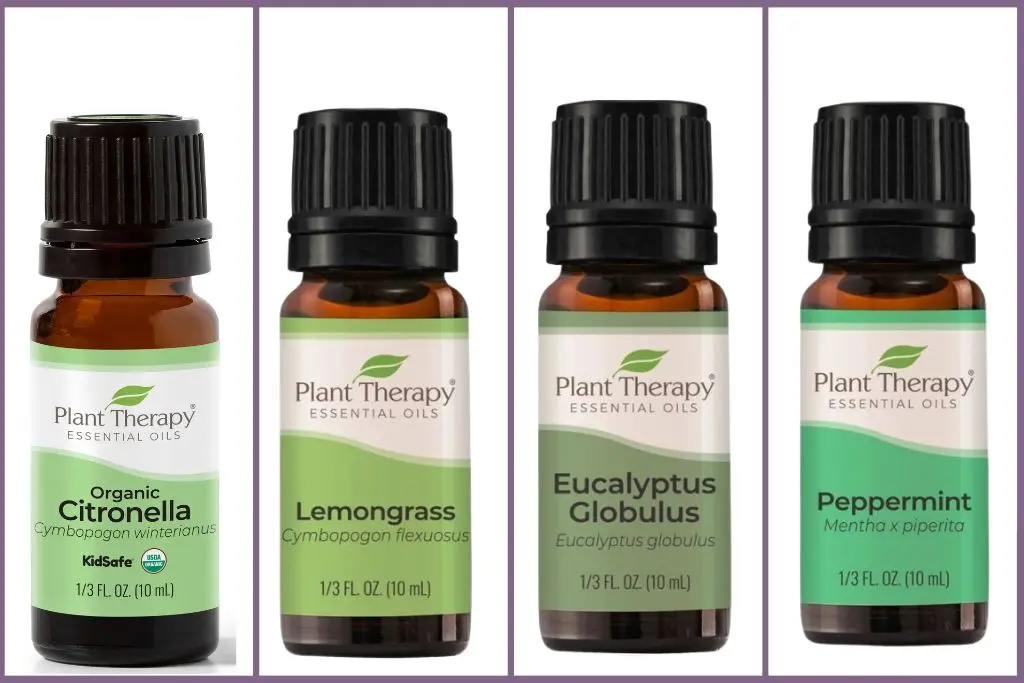
Certain essential oils are well known for helping discourage pests during outdoor activities:
- Citronella: Discourages mosquitoes.
- Lemongrass: Offers a strong, citrus scent that discourages many bugs.
- Lavender: Calms and smells great; makes outdoor evenings more pleasant.
- Eucalyptus: Sharp, clean scent that refreshes the air.
- Peppermint: Invigorating, often used to keep bugs away from patios.
How to use pest-deterring oils outdoors:
Mix 10 drops of your chosen essential oil (or a blend) with 2 ounces of water and 1 teaspoon witch hazel in a small spray bottle. Shake well and mist around your picnic table, seating area, or patio—avoiding direct contact with skin.
Want a simple step-by-step recipe? Try my easy DIY Room Spray Recipe using essential oils for natural pest control and fresh air outdoors.
Important Safety Tip: Always dilute essential oils before skin contact—mix 1 drop of essential oil with 1 teaspoon of carrier oil (like coconut or almond oil). Do not rely on essential oils as your only bug protection if you are in high-risk areas, use EPA-approved repellents as needed.
Plant Therapy Nature Shield: Skin-Friendly Bug Deterrent Spray
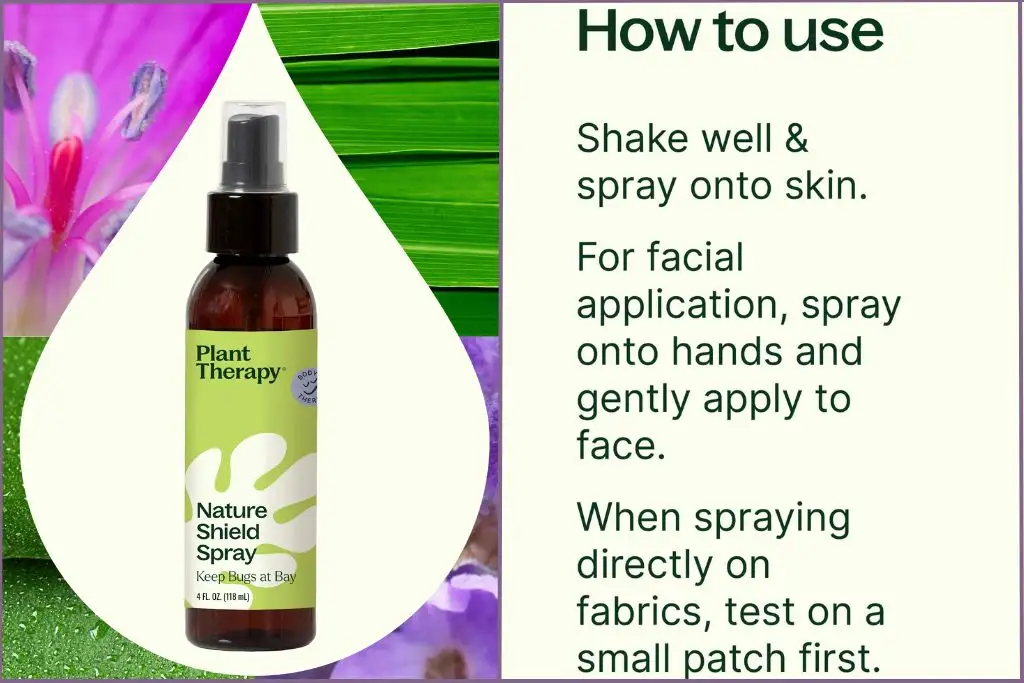
If you’re looking for a spray you can use directly on the skin, Plant Therapy Nature Shield Spray is the best option.
Plant Therapy’s ready-made sprays are formulated to high safety standards, making them a convenient and skin-friendly alternative for bug deterrence outdoors. This pre-formulated natural insect repellent for skin uses essential oils selected for their safety and effectiveness. It is carefully crafted to be gentle enough for outdoor skin application.
To use this outdoor bug spray, shake well and apply a light spray to exposed skin. For use on the face, spray onto hands first, then gently apply. Always conduct a patch test before widespread use. If spraying clothing, test on a small, inconspicuous area of fabric first.
The same formulation is also available as a pre-diluted roll-on that you can apply directly to your skin.
Essential Oils for Sun Comfort and After-Sun Skin Care
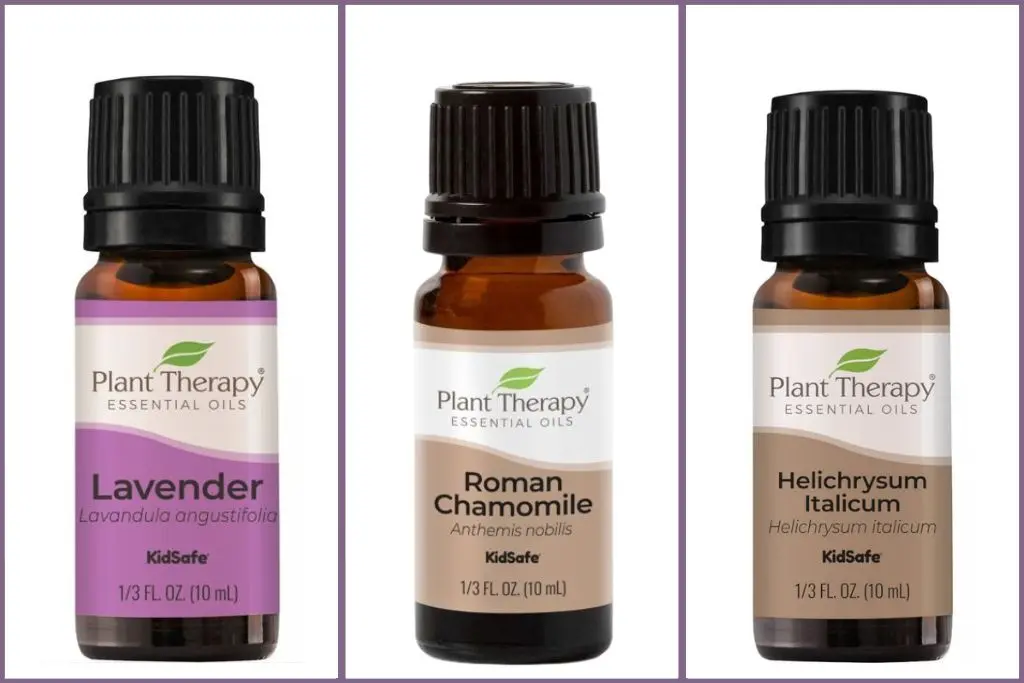
Essential oils can soothe skin after sun exposure, but they should never replace sunscreen. Always protect your skin first with shade, clothing, and broad-spectrum sunscreen.
Use these gentle essential oils for post-sun care:
- Lavender: Calms and soothes sensitive skin.
- Chamomile: Known for its calming touch on skin.
- Helichrysum: Helps support dry or rough patches.
How to use essential oils for post-sun care: Mix 2 drops lavender essential oil with 1 tablespoon aloe vera gel or dilute in unscented carrier oil. Gently apply to sun-exposed skin and dry spots for a cooling, moisturizing effect.
Looking for an easy, ready-to-use option? Make this all-natural Botanical Face Mist Spray for instant post-sun comfort and hydration.
Quick Safety Note: Always dilute essential oils before using on skin. Avoid using them on broken skin, near the eyes, or on children under age 2. Stop use if irritation develops.
Remember: Essential oils are not sunscreen. Apply only after sun exposure, as part of your after-care. For routine sun safety, rely on sunscreen and protective clothing.
Essential Oils to Freshen Gear and Boost Mood Outdoors
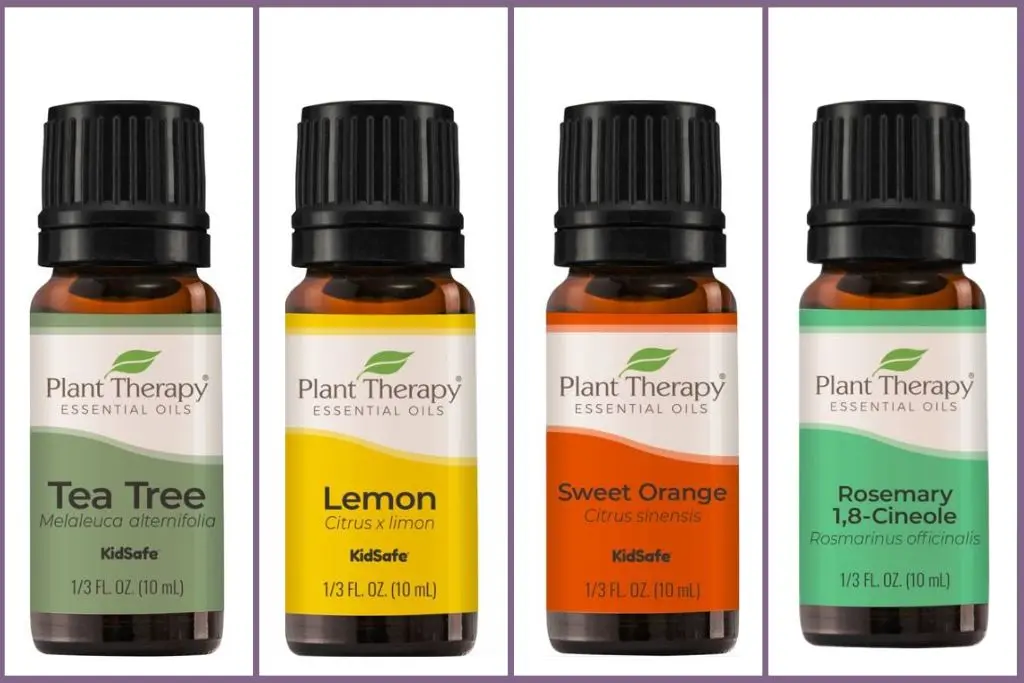
Camping, hiking, and bonfires are fun, but they can leave gear smelling musty or smoky. Essential oils can help freshen your space and lift your spirits while you’re outside.
Top essential oils for odor and mood:
- Tea Tree: Natural deodorizer.
- Lemon: Breezy, bright, and uplifting.
- Sweet Orange: Light, cheerful scent for fresher tents and sleeping bags.
- Thieves (or similar blends): Cuts strong odors and adds a cozy feel after a long day.
- Rosemary: Clean-smelling and helps clear the mind after outdoor adventures.
- Thieves: A bold, spicy blend that cuts through odors and brings a cozy, revitalizing aroma to your space. Get more ideas for ways to use Young Living Thieves essential oil.
How to use:
Add 10–15 drops essential oil to 2 ounces water and 1 teaspoon witch hazel in a spray bottle. Shake before use and mist gear, air, or seating. Avoid faces and eyes.
Using essential oils can make your outdoor time feel more inviting and help freshen shared spaces or gear after long days in nature.
Want more inspiration for backyard relaxation? You’ll find some easy and practical ideas in this post on creating relaxing outdoor spaces with aromatherapy essential oils.
How to Use Essential Oils Outdoors Safely
Using essential oils outdoors is different from indoor use. Open air changes how scents spread and how your skin might react. To stay safe and get the best results, follow these guidelines for application, blending, and storage.
Skin Safety
Always dilute: Mix 1 drop essential oil with at least 1 teaspoon carrier oil (like coconut, jojoba, or almond). For the face, use 1 drop per 2 teaspoons carrier oil.
Patch test new blends before wider use. Try a small amount on your inner forearm. Wait 15 minutes to check for redness or irritation.
Only apply oils to small areas like wrists or ankles, never on sensitive or broken skin. Don’t use oils near eyes, lips, or broken skin, and avoid use on babies under 2 years old.
Be extra careful in the sun: Some oils make the skin more sensitive. Details on this are in the next safety section.
Diffusing and Spraying Outdoors
Use a portable diffuser: Set up a battery or USB-powered portable aromatherapy diffuser on your patio, picnic table, or tent.
Make a spray: Add your chosen essential oil or blend to this air freshener recipe. Shake well, then mist on gear, tents, or in the air. Avoid spraying directly on skin or food.
Be mindful of wind and distance: Spray or diffuse upwind and away from people for the most comfortable scent.
Blending and Recipes for Outdoor Use
Keep blends simple: 2–3 oils max per blend to avoid overpowering scents.
Define your purpose: Decide if you’re targeting bugs, mood, or odors, then pick oils that work well together (ex: lavender, citronella, and lemongrass for bug-repellent blends).
Make small batches: Use up to 20 drops total essential oil per 2 oz liquid spray, or 3–6 drops per tablespoon carrier oil for rubs.
Sample quick blends:
Bug-Off Roll-On: 1 drop citronella, 1 drop eucalyptus, mix into 2 tsp sweet almond oil.
Fresh Air Spray: 5 drops lemon, 5 drops tea tree, 2 oz water, splash of witch hazel.
Safety and Precautions: What to Know Before You Head Outdoors
Phototoxicity and Sun Sensitivity
Some oils, particularly those that belong to the citrus aroma family, such as lemon, bergamot, lime, grapefruit, and bitter orange, can cause burns or irritation if your skin is exposed to sunlight soon after use.
What to do: Avoid applying these oils to skin you’ll expose to the sun. Use them in sprays for gear or diffusers instead.
Respect Nature and Other People Around
Go light on oils: Strong scents can disturb wildlife or fellow campers/hikers. Small amounts are best in natural areas.
Protect water and earth: Never pour essential oils or blends into streams, lakes, or onto soil.
Use eco-friendly bases: Choose biodegradable ingredients for sprays and balms.
Label your blends: Prevent mix-ups by labeling spray bottles and roll-ons clearly.
Dispose of waste responsibly: Take any wipes, tissues, or empties home—never leave waste in nature.
Storage and Transport Tips
Keep your oils safe and spill-free while out and about:
Shield from heat and light: Store in dark glass bottles, in a soft, insulated pouch. Keep out of direct sunlight and hot cars.
Prevent leaks: Pick bottles with screw-on caps and inserts, or opt for rollerballs or dropper bottles. Pack only what you plan to use.
Label everything: Mark each bottle clearly so you don’t use the wrong oil by mistake.
Easy access: Pack oils deep in your bag, wrapped in a soft cloth, to avoid breakage.
Enjoy nature confidently when you know how to use essential oils outdoors safely and effectively while being mindful of nature and others around you.
Essential oils can add comfort, confidence, and freshness to all your outdoor experiences—if you use them safely and respectfully.
Quick Checklist for how to use essential oils outdoors safely:
- Always dilute essential oils, never use undiluted on skin.
- Watch for sun sensitivity—some oils can irritate when skin is exposed to sunlight.
- Be mindful of the amount and location when using oils outdoors.
- Choose safe recipes, patch test, and take just what you need.
- Care for nature and others by avoiding strong scents and eco-hazards.
With these tips in mind, you can step into nature feeling refreshed, prepared, and inspired by the power of scent, while putting safety and the environment first.
